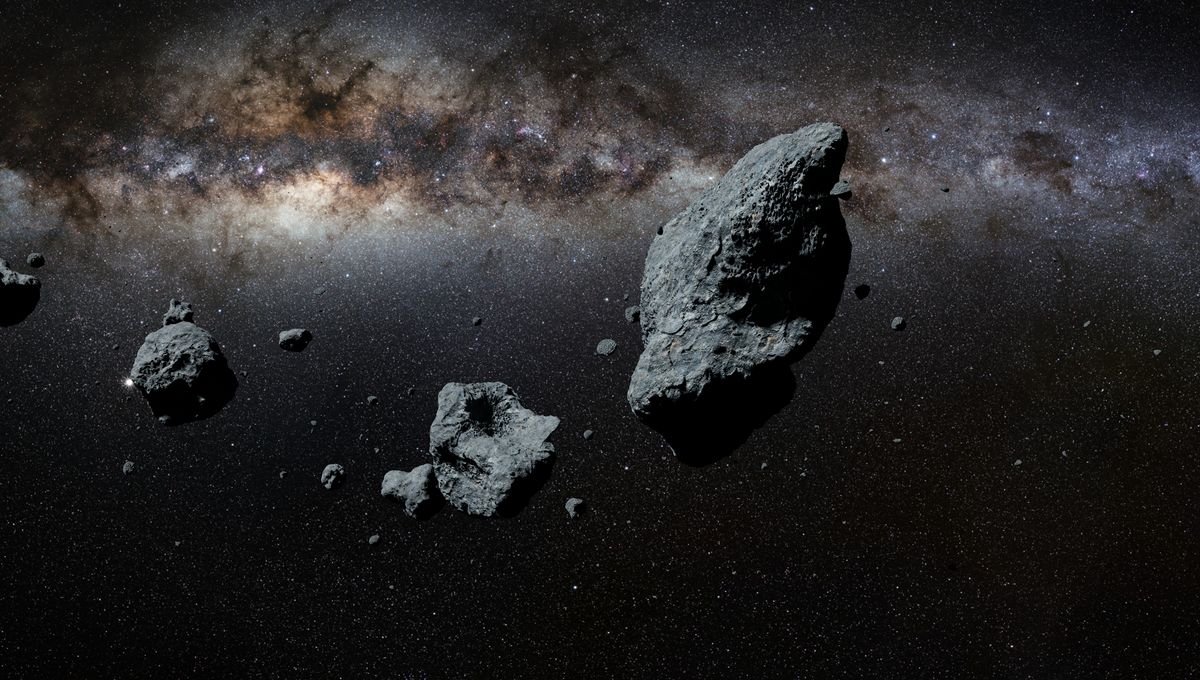
The Main Asteroid Belt is located between the orbits of Mars and Jupiter. The largest objects there have been known for hundreds of years, but new smaller rocks orbiting in this region are discovered all the time. A team has now pushed the discovery limit to smaller sizes, delivering the smallest asteroids known in the main belt.
Among the asteroids that get close to our planet, the decameter class (those tens of meters wide) has been seen aplenty. One of them, roughly the size of a bus, exploded over Chelyabinsk in 2013. The smallest Near-Earth Object was between 40 to 60 centimeters (16 to 27 inches) in diameter and burned up in the atmosphere.
Those objects were close – on the other hand, discovering such small objects in the main belt, which is hundreds of millions of kilometers away, is an extremely difficult feat. The team of researchers behind this new discovery cleverly reused images from the search for exoplanets. Stacks of images looking at the same distant star field were used with a technique called “shift and stack”, which aims to highlight possible movement in the foreground, like from an asteroid. They were able to find 138 asteroids in the decameter size range. Some were as wide as a stadium, but the smallest asteroids had a size of about 10 meters (32 feet).
“We have been able to detect near-Earth objects down to 10 meters in size when they are really close to Earth,” lead author, Artem Burdanov, a research scientist in MIT’s Department of Earth, Atmospheric and Planetary Sciences, said in a statement. “We now have a way of spotting these small asteroids when they are much farther away, so we can do more precise orbital tracking, which is key for planetary defense.”
Burdanov, Professor Julien de Wit, and MIT graduate student Samantha Hassler worked out how to use state-of-the-art graphics processing units (GPUs) to employ this technique with large datasets. You need to have speed because you need to go through thousands of images.
They first used data from the SPECULOOS (Search for habitable Planets EClipsing ULtra-cOOl Stars) survey and also from a telescope in Antarctica. They were able to find a large number of new asteroids in the main Belt. The jackpot though came from using JWST observations.
The space telescope studies the cosmos in infrared, and asteroids are brighter in infrared than the light they reflect from the Sun in visible wavelengths. JWST has taken over 10,000 images of the TRAPPIST-1 star, a system around 40 light-years away that has seven Earth-sized planets. Those many images are needed to try and study these planets’ atmospheres (so far no evidence of any).
Using their approach, the team was initially able to find eight known asteroids from the belt before finding 138 new asteroids all in the decameter-size class. Some of them might become Near-Earth Objects, as gravitational disturbances push them closer to the Sun.
“We thought we would just detect a few new objects, but we detected so many more than expected, especially small ones,” de Wit added. “It is a sign that we are probing a new population regime, where many more small objects are formed through cascades of collisions that are very efficient at breaking down asteroids below roughly 100 meters.”
“This is a totally new, unexplored space we are entering, thanks to modern technologies,” Burdanov explained. “It’s a good example of what we can do as a field when we look at the data differently. Sometimes there’s a big payoff, and this is one of them.”
The paper is published in the journal Nature.
Source Link: Smallest Asteroids In The Main Belt Ever Detected